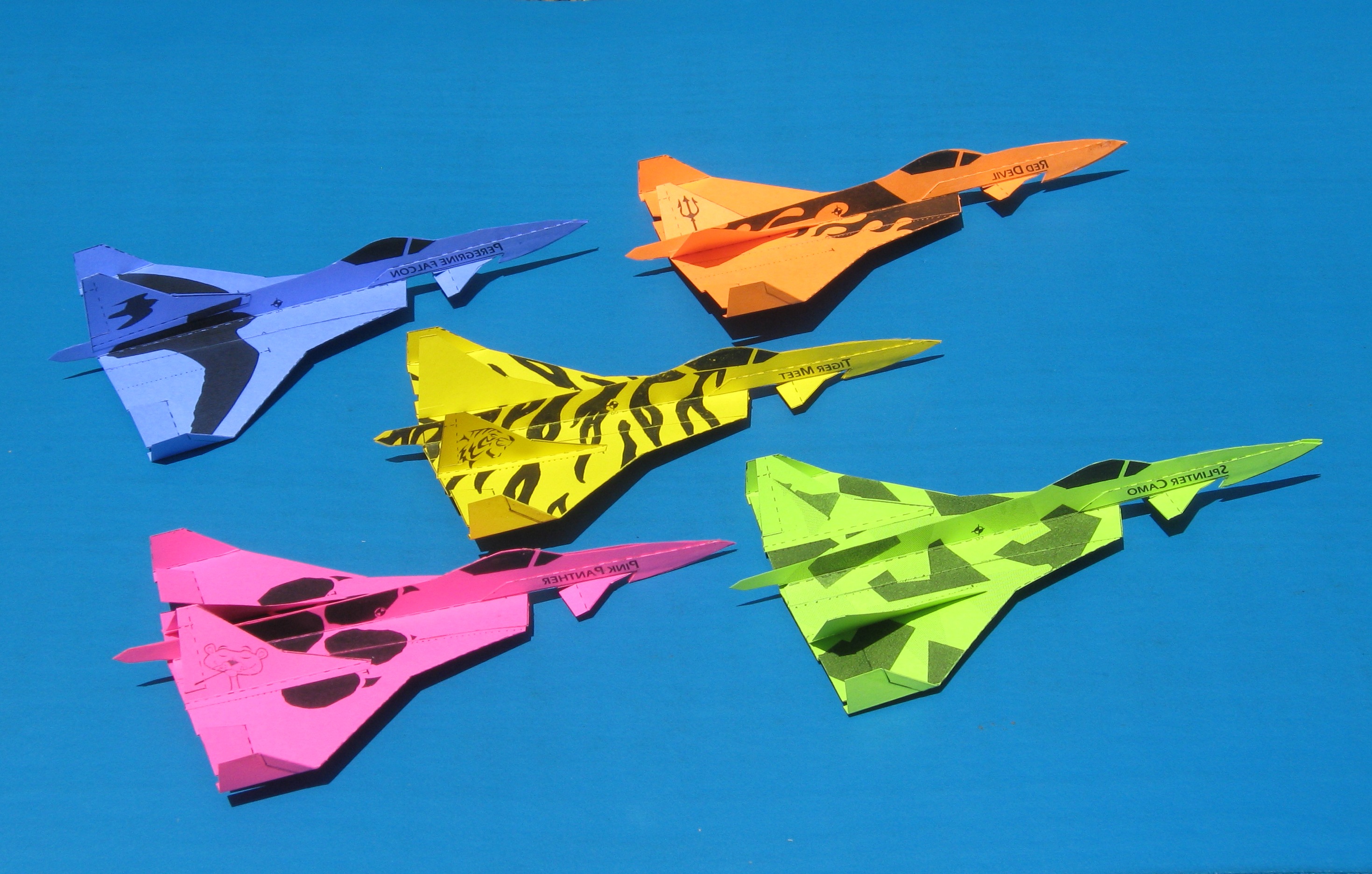Gliding is the purest form of flight and I have always been mesmerized by it, but I was tired of traveling long distances to buy special materials for my gliders. I was also tired of it taking a week to build them and a minute to break them. So, I took it as my personal challenge to design a glider that required only stationery paper and minimal building time, and yet maintained excellent gliding characteristics. The result was the Speed Jet paper glider.
No doubt, jets are amazing — they are sophisticated, fast, sleek, and beautiful. One of the configurations that I like the most is the delta wing, so I included several features that I like from various fighter jets: the double delta of the Saab Draken, the fuselage profile of the McDonnell-Douglas F-15, the canard of the Eurofighter Typhoon, and the twin rudder of the MiG 29. Soon, I realized that the Speed Jet could be built in five different tail configurations using the exact same parts.
The fuselage is constructed with the laminated paper technique made popular by Yasuaki Ninomiya and others, but the design uses as few card stock layers as possible, because multiple laminations are heavy, labor intensive, and time consuming.
Here are the specs of the Speed Jet:
- Type: F/F glider
- Wingspan: 5″ (wingtips up)
- Wing area: 16.16 sq. in.
- Length: 9¼”
- Weight: 0.20 oz
- Wing loading: 0.33g/sq. in.



